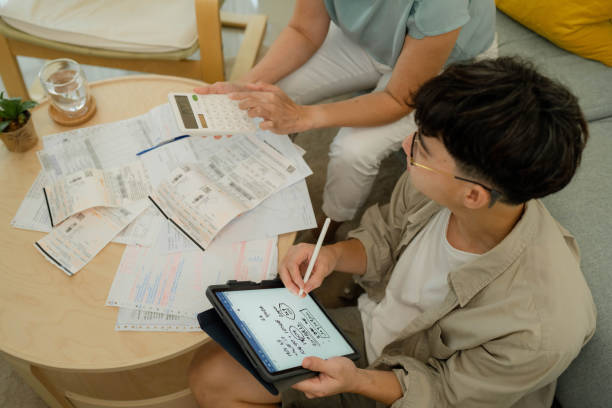Introduction
GST: Goods & Services Tax, three most intimidating words for majority of the freelancers who have grown their clientele base upto a significant level. As a freelancer when you grow up to a point where your reputation sky-rockets, networking pays-off and billables scale-up. Then another responsibility falls upon your shoulders and of course, that is GST.
Like it was not enough headache to deal with invoicing in the first place. That when you finally settled it with invoice generators. Now, you also have to go through the whole new rules and regulations.
Okay, let’s pause for a minute and break the whole invoicing ordeal and incorporation of GST, after you’ve hit all the conditions under the new rules and regulations. Firstly, get this straight, if you think it is complicated it will be complicated.
However, if you just for once believe me when I say, it is not actually that tough to deal with. All you need is understanding of the crux of the system and being equipped with the right set of resources. Yes, I get it. At this point you might feel I’m bluffing but that is because GST was quite intimidating in the beginning because of its quarrelsome implementation.
However, since then systems, like invoice generators, e-filing and guiding portals by government; have streamlined and made the process exceptionally smooth sailing. To further ease out the process for you, here is a GST invoicing guide to get you started.
Are You Ready For GST?
First things first, figure out if, even you fall under the primary conditions of GST. Following are the conditions under which a freelancer, as a service provider, is required to mandatorily register under GST:
- Turnover exceeding Rs. 20 lakh in a financial year (For states other than the North-Eastern States)
- When turnover exceeds Rs 10 lakh in a financial year (For North-Eastern states)
- For services covered under Online Information and Database Access and Retrieval services (OIDAR services)**
- In the case of rendering your services to the state or the country, that is, exporting of your services.
Every freelancer who exports services outside of the state or country and makes revenue from them must register for GST, regardless of any exemption restrictions. According to the GST regulations, freelancing services fall within the category of database access and online information.
Although being GST compliant when running a one-man army may appear to be a hassle, it is still critical to follow all requirements. If you have a solid system in place that supports GST invoicing, it becomes a lot easier. Keeping track of stock is also important.
Invoice generators like Refrens make it easier to invoice faster, keep track of everything, and stay compliant with GST. You can create GST invoices, quotes, delivery notes, purchase orders, credit notes, track stock, add payments, and see who is behind on their payments, among other things.
Definition Of A Freelancer (Under GST)
“A freelancer is a person who is not hired by anyone and is paid on a contract basis by multiple clients to work on various short-term and long-term assignments. In brief, a freelancer is a type of service provider who does not have an employer-employee connection, and the GST laws for service providers apply to freelancers as well.”
GST Rates Applicable To A Freelancers
Depending on the type of service supplied, freelancers are subject to GST rates of 0%, 5%, 12%, 18%, and 28%. If the service you provide does not have a set rate, you must charge your customers 18% GST.
You can visit the government’s GST webpage and utilise a GST calculator to figure out how to include profit margins in your freelance services and get real-time GST inclusive and exclusive rates.
Furthermore, invoice generators such as refrens also offer a free tax calculator and tax management tool.
GST Returns To Be Filed By A Freelancer
If a freelancer is registered as a regular taxable person and has a GSTIN No., then he must file 25 GST-returns every year. Details for these returns are all available with procedural guidance (on how to fill these returns, step-by-step) on the e-Filing of GST portal of India.
REMEMBER, It is not calculus! It is just a tax return, simply follow the instructions, put in all the details in the required sections and file the return yourself. Otherwise, you can also take assistance from a CA or in fact, ask them to file your return on your behalf, for which they shouldn’t charge much but a fee.
It is completely alright to go for the latter option and outsource this piece of work. It will only help you to focus more on your actual work and hence, provide better services to your client.
Types Of Invoices
Another common misconception is that there is only one type of Tax invoice that has everything in it, all quotations, all taxes etc. NO!
Depending on the type of GST taxpayer, different forms of GST invoices exist. When preparing an invoice, there are special GST laws that must be followed. Hence, using an efficiently built invoice generator is a must to ease this process.
Furthermore, because it serves as basic evidence of the provision of goods or services, the GST invoice is an important aspect of the GST Law.
- Tax Invoice: Whenever a sale of goods or services is made to the buyer or recipient, every person registered under the ‘Regular Scheme’ of GST is required to issue a GST invoice known as a ‘Tax Invoice.’The goal of a tax invoice like this is to collect tax while also allowing the buyer (to whom the invoice is sent) to claim the Input Tax Credit (ITC).
On the top of such an invoice, the phrase “Tax Invoice” must be written. Invoices with a value of less than Rs 200 can be consolidated (day-by-day) and issued.
Standard format of Tax Invoice:
- Receipt Voucher: A registered supplier may receive an advance from the buyer on occasion. The supplier will offer a “receipt voucher” in this scenario.
- Refund Voucher: If the supplier does not make any supplies of goods and services after issuing the aforementioned receipt voucher, the supplier will issue a Refund Voucher.
- Payment voucher: If the supplier is not registered for GST and goods or services are given to a GST-registered buyer/recipient, and the goods or services are subject to GST’s “reverse charge,” the buyer/recipient must issue a payment voucher to the unregistered supplier.
- Credit Note/ Debit Notes: When products are returned, the value/price of goods/services decreases, or discounts are given, the supplier issues a Credit Note to the buyer/recipient. Credit notes must be included in GST reports in order to reduce the GST tax liability.
GST Invoices are issued in the following way:
For Goods: The original invoice to the buyer is required. The transporter will receive a duplicate invoice copy, while the supplier will receive a triplicate invoice copy.
For Services: The original invoice copy is sent to the recipient and the supplier keeps the duplicate invoice copy with himself.
Are Freelancers Eligible To Claim Input Tax Credit (ITC)?
With an input tax credit (ITC), you can deduct the tax you already paid on purchases from the GST you owe on your sales. According to GST regulations, all regular taxpayers who are registered for GST can use ITC to decrease their GST payment.
Similarly, a freelancer who is registered can use the taxes he has paid on services he has used to provide any service.
When Is Issuing A Tax Invoice Not Mandatory?
Only two conditions apply to a supplier’s ability to avoid issuing a GST invoice:
- The transaction’s recipient is unregistered.
- When the recipient declares that he or she does not require an invoice of this nature.
Keep in mind that a supplier must meet both of these criteria in order to avoid the legal requirement of producing a GST invoice. Instead, at the conclusion of each day, the registered provider can produce a consolidated tax invoice for all such supplies.
It’s important to note that a registered firm must produce a bill of supply instead of a typical GST invoice when selling tax-exempt products and services. This is also true if the supplier is already paying taxes as part of a composition arrangement.
NOTE: GST invoices are primary source documents, and caution should be exercised in ensuring that they are generated in accordance with GST regulations. An inaccurate invoice may result in a penalty or fine, and any Input Tax Credit claimed may be revoked.
What are the penalties for filing returns late?
- A Rs 200 late fee will be charged.
- There will also be an annual interest rate of 18 percent.
- The taxpayer will determine this based on the amount of tax to be paid.
- If the tax is not paid, a minimum penalty of Rs 10,000 would be imposed.
- The highest penalty for delinquent tax is 10% of the total amount payable.
| DO’s | DON’Ts |
| Keep track of every document you make and receive, making sure they include the necessary information. | If you want to earn GST input tax credit, don’t buy from unregistered vendors. |
| Check that you’re charging GST correctly – CGST and SGST for sales in the same state, IGST for sales in other states. | Don’t forget to give each invoice its own serial number. |
| Create tax invoices for taxable items and services sold. | Don’t cancel an invoice that has already been issued and paid for. Instead, provide a credit note. |
| All purchases of goods and services should be accompanied with tax invoices. If there are any advance payments, make sure they are mentioned. | Ship products only with the original invoice. |
| Ensure that your GSTIN, as well as the GSTINs of any clients or suppliers, are included on all papers. | Don’t charge GST; instead, make sure it’s split correctly amongst CGST, SGST, and IGST. |
Conclusion
Optimum utilisation of your time is very crucial at this stage of your freelancing career or small business, not only because you’ve tons of work on your platter but also because now you cannot afford a lot of mishaps. You have to deliver worthwhile services to your clients and most importantly, FOCUS ON DETAILS.
Now that you’re well-versed with the crux of the GST Invoicing, optimise your time using this guide. Choose the best suitable combination of delegation of work. For eg., if you cannot afford to invest any more energy in invoicing and filing returns, hire a CA or an intern; depending upon the scale of your business.
Bottom line is, taxation can be very intimidating without the proper knowledge of its basics. However, after being equipped with all the necessary tools from this guide, you should be good to go.
Footnote:
**According to the GST Act, OIDAR services include the following services:
- Providing cloud-based services
- Advertising on the Internet
- Online gaming services
- Provision for selling e-books, music, movie, software and other intangibles via the internet
- Providing data or information, retrieval or otherwise to any person in electronic form through a computer network







